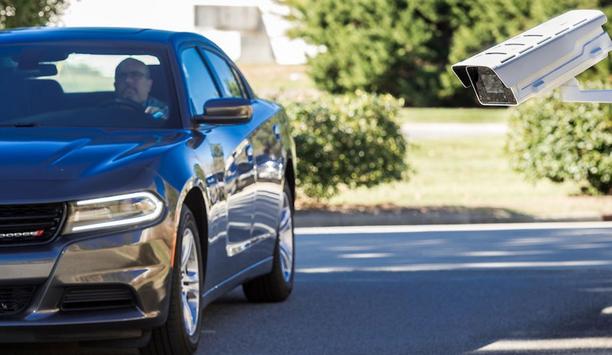Over the course of the past few months, I have discussed a myriad of topics, from Big Data, the Internet of Things and emerging video surveillance-use cases, to analytics, storage complexities and IT technologies like virtualisation and hyperconverged infrastructure (HCI). All of these trends have a significant effect on the security market, and in April they were highlighted in spades at ISC West.
It’s great to talk about these trends but it’s far better to see how they are being leveraged in real-world applications. That’s really where we can all see the true value of new solutions and concepts. We’re lucky enough to work with some leading organisations that want others to benefit from their experience and I’m happy to have the opportunity to share two of these applications with you.
Protecting educational facilities
UCF has adopted advancements in technology, particularly video surveillance solutions, to help ensure stronger security on campus
Educational institutions face an increasingly complex risk environment. Recent high-profile incidents emphasise these risks and magnify the vulnerabilities that educational facilities face. These incidents have led to more public demand for improved security solutions across campuses.
The primary mission of these organisations is to deliver quality education to students, and they face the challenge of balancing between a highly secure facility and one that supports open interaction. The University of Central Florida is no different.
This organisation, one of the largest universities in the country, has adopted advancements in technology, particularly video surveillance solutions, to help ensure stronger security on campus.
Active shooter incidents
In March 2013, UCF faced an active shooter situation in which a former student planned to pull the fire alarm in a residence hall and then attack his classmates as the building was evacuated. However, the shooter’s gun jammed, and as officers were closing in on the gunman, he took his own life. During the university’s response to the incident, accessibility to critical video data was a major issue.
 |
| Educational institutions face an increasingly complex risk environment |
UCF had cameras in the area where the incident took place, but first responders had no way of viewing the footage without being at the physical location of the video recorder.
At the time, UCF had a wide variety of standalone systems in place, including non-integrated video surveillance, access control and intrusion systems. As a result, there was no way to centralise video management, viewing and analysis.
Upgrading from analogue systems
Altogether, its security system consisted of older analogue platforms that were reaching end of life, 58 standalone servers, 12,000 access points and a wide variety of DVRs — all being managed in a siloed manner. UCF needed a solution that would allow officials to centralise system management, store video data more effectively and reliably, and enable the security team to deliver situational awareness to responders when needed.
Security leaders sought a way to further modernise its security, surveillance, access control and IT infrastructure
The university deployed an HCI solution, one that is optimised for demanding, data-intensive workloads like video surveillance. Using standard off-the-shelf server hardware, the system aggregates the storage and compute resources from multiple servers into a single unified pool that all cameras can access, which maximises performance and storage capacity utilisation.
The platform also hosts the university’s video management solution, which serves as a centralised source to manage video and effectively protect its security data. Because of the growing demand for video across UCF's campuses — for both safety and business purposes — the HCI solution’s ability to eliminate the opportunity for data loss and easily scale were key components in its selection.
Protecting air travel and airports
In 2012, Charleston International Airport embarked on an ambitious upgrade project dubbed the Terminal Redevelopment and Improvement Program. The $200 million initiative was designed to modernise and expand the facility to meet increased passenger demand.
While the aesthetics and amenities of the airport were under construction, security leaders sought a way to further modernise its security, surveillance, access control and IT infrastructure. The IT and security teams needed to address the challenges of their existing standalone server environment, which included siloed systems, management complexity and high administrative and equipment costs.
 |
| Charleston International Airport embarked on an ambitious upgrade project dubbed the Terminal Redevelopment and Improvement Program |
Considering the high value of the airport’s video, security and IT data, it required a solution that could deliver reliable data protection, system resiliency and fault tolerance. The airport is required to store video for 30 days, but it seeks to expand its retention time to 60 days. Therefore, technology that can scale simply was key in the selection process.
Storage system updates
It also required a storage platform that could manage the demanding and write-intensive nature of its nearly 250 IP surveillance cameras — a challenging task for traditional video recorders. The airport deployed HCI appliances to better manage captured video data and expand its archive capability for video surveillance.
Users rely on video to validate whether something did or did not happen - and this is essential in airports
HCI surveillance solutions are designed to provide industry-leading resiliency. Even if multiple hardware failures occur, including an entire appliance, video management servers will remain online and recording, and any previously recorded video will continue to be protected and accessible.
Reducing expenses and costs
The solution also reduced total cost of operations by consolidating servers, storage and client workstations into one enterprise-class solution that is easily managed from a single user interface, without the need for specialised IT skills.
These use cases demonstrate the value emerging technologies bring to these types of modern environments. And they show that solutions like HCI are no longer simply much-talked about technology trends. Video, IT and security data is critical to organisations of all types and they need to ensure their investment in capturing this data is protected.
From a security standpoint, users rely on video to validate whether something did or did not happen. If that video data isn’t protected, they lose a very valuable investigative tool. That isn’t an option in today’s complex environment. That’s is why it is paramount to understand how new technologies can help expand current capabilities and evolve security operations. This can’t be left to chance.








